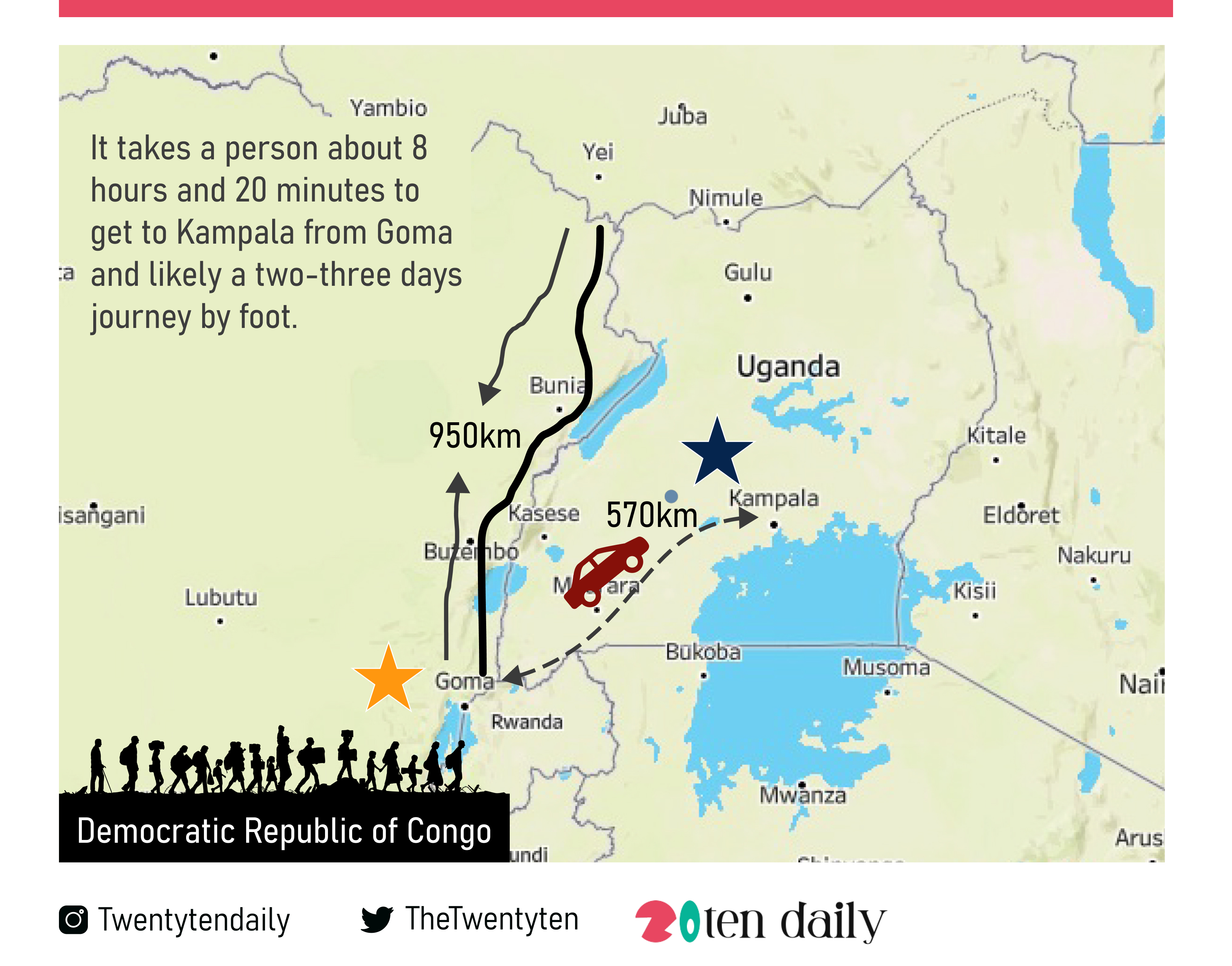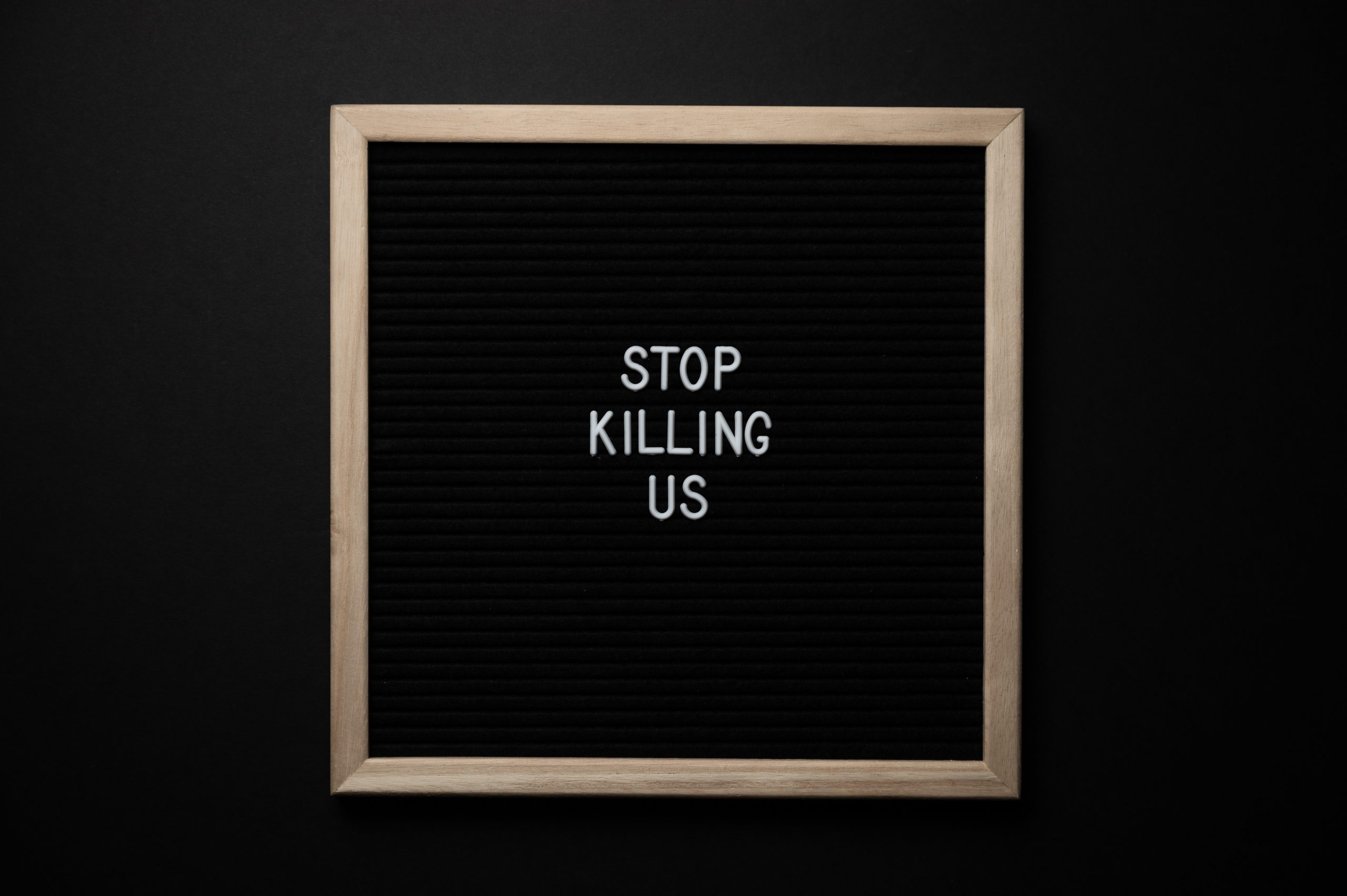Mapping The Migration Of Thousands Of Congolese Escaping The M23 Conflict
Thousands of people have fled their homes as the conflict between the Congolese army (FARDC) and the M23 rebels rage on in the territory of Nyiragongo, near Goma, the capital of North Kivu.
An estimated 3,000 residents from six villages in eastern DR Congo – including, Bukima, Nyesisi, and Ruhanga – have fled clashes between the Congolese army and M23 since a faceoff began last week Thursday. According to multiple sources, the Congolese army launched an offensive against the group after the militia attacked both the government forces and the UN’s Monusco peacekeeping force.
Currently, hundreds of Congolese migrants are camped at the border post of Bunagana — an area just under 90 kilometres (56 miles) from the provincial capital of Goma — to Uganda’s southwestern district of Kisoro, waiting to be admitted into Uganda, while others have taken off in the direction of Rugari in the north, or to Kibati, south of Goma.
How far Is the Journey To Uganda?
The land boundary between the Democratic Republic of the Congo and Uganda extends for approximately 950 km from the tripoint with Rwanda in the south to the tripoint with South Sudan in the north. The total driving distance from Goma in DR Congo to Kampala, Uganda is 354 miles or 570 kilometres, this means that it would take a person about 8 hours and 20 minutes to get to Kampala from Goma and likely a two-three days journey by foot. The most preferred route to Uganda from Goma is through Bunagana, in the Democratic Republic of the Congo, then onward to Bukinda and several other stops before getting to Kampala or just the outskirts of Uganda.

Meanwhile, a UN refugee agency said tens of thousands of people have fled Bunagana, after an unexpected attack on Buhumba village by the rebels who speculatively came from the border with Rwanda. The Congolese army confirmed the attacks and accused Rwandan soldiers of aiding M23 rebels.
However, the M23 denied the claim, stating that the “defamatory statements” by the Congolese army were aimed at covering up their notorious incompetence. The rebel group said it was seeking dialogue with the government and had withdrawn its troops from the combat zone.
History Of The M23
The M23 was formed by former members of a Tutsi militia group known as the National Congress for the Defense of the People (CNDP), which was previously supported by Rwanda and Uganda.
Its fighters were later incorporated into the Congolese army as part of a peace agreement signed on March 23, 2009. However, they rebelled in 2012, claiming that the agreement had not been upheld, and renamed their group the March 23 (M23) Movement.
The M23 revolt peaked in 2012 and 2013 when it captured large parts of North Kivu province in eastern DRC. The M23, one of the many armed rebel groups roaming eastern DR Congo, briefly seized Goma before being defeated and driven out of the country by Congolese troops backed by UN peacekeepers (MONUSCO).
Following its defeat, the M23 signed an agreement with Kinshasa that included provisions for its fighters’ reintegration into civilian society.
However, the group has accused the government of breaching the agreement once more, and fighting resumed last year.



